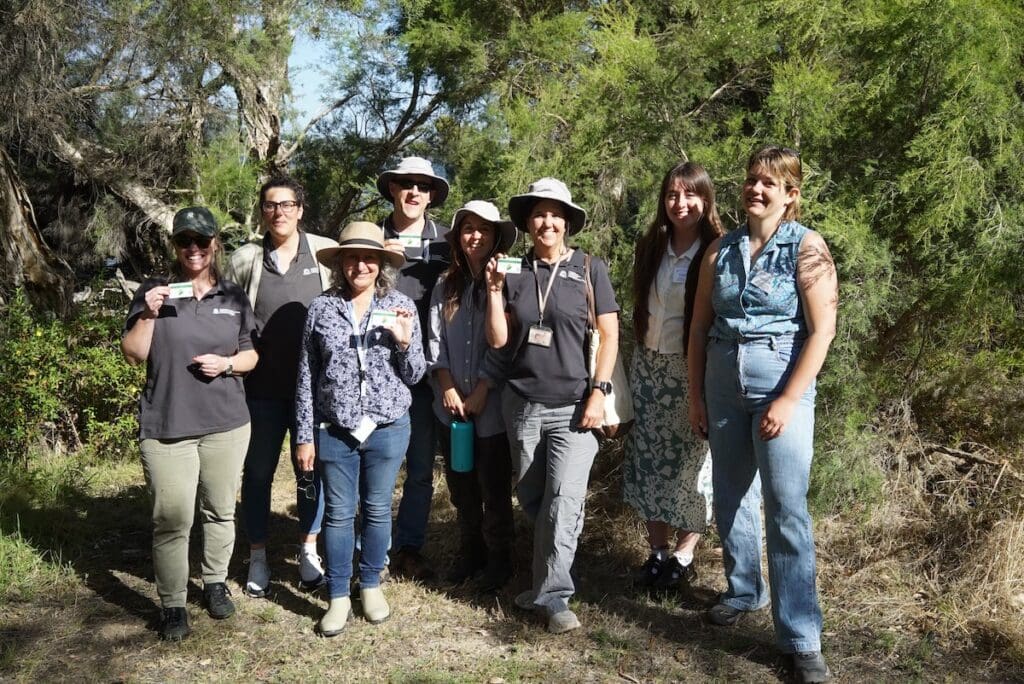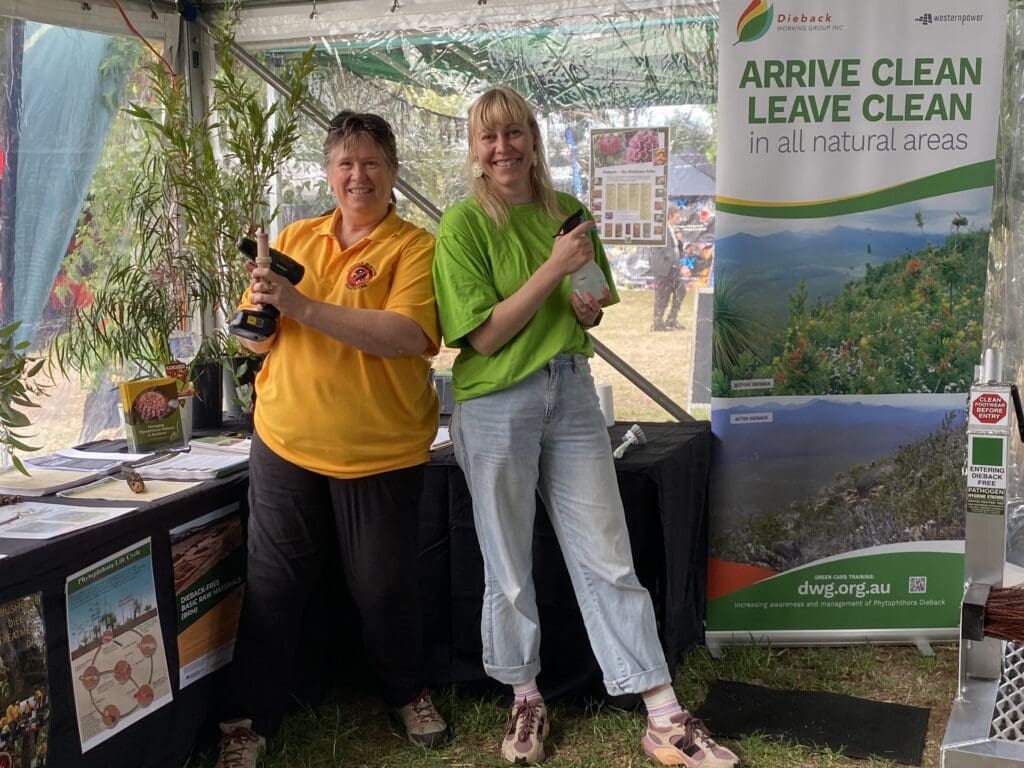Dieback Working Group, News
Perth Garden Show
Garden lovers flocked to McCallum Park for the 2025 Perth Garden Show in early May, where the Dieback Working Group team were waiting to chat all things Phytophthora Dieback. Phytophthora is a soil-borne water mould that kills a wide range of native and horticultural plants by attacking their roots and limiting their ability to take up water and nutrients. Phytophthora cinnamomi is a major issue in South West WA, so we are on a mission to spread awareness, not infested soil!
We were lucky enough to share a beautiful, plant-filled marquee at the Show with Kings Park, DPIRD, DBCA, and Perth NRM’s ReWild Perth Program. Kings Park promoted planting waterwise local species, DPIRD shared info on Polyphagous Shot Hole Borer and Queensland fruit fly, and Perth NRM displayed wildlife-friendly ideas for urban areas including nesting boxes and bird baths.
Our marquee wasn’t just for the grownups; kids got hands-on at our activity station with colouring pages from DWG and DPIRD, learning about the adorable animals we’re working to protect (like Honey Possums), clever solutions like Dieback Detector Dogs, and biosecurity challenges like Qfly.
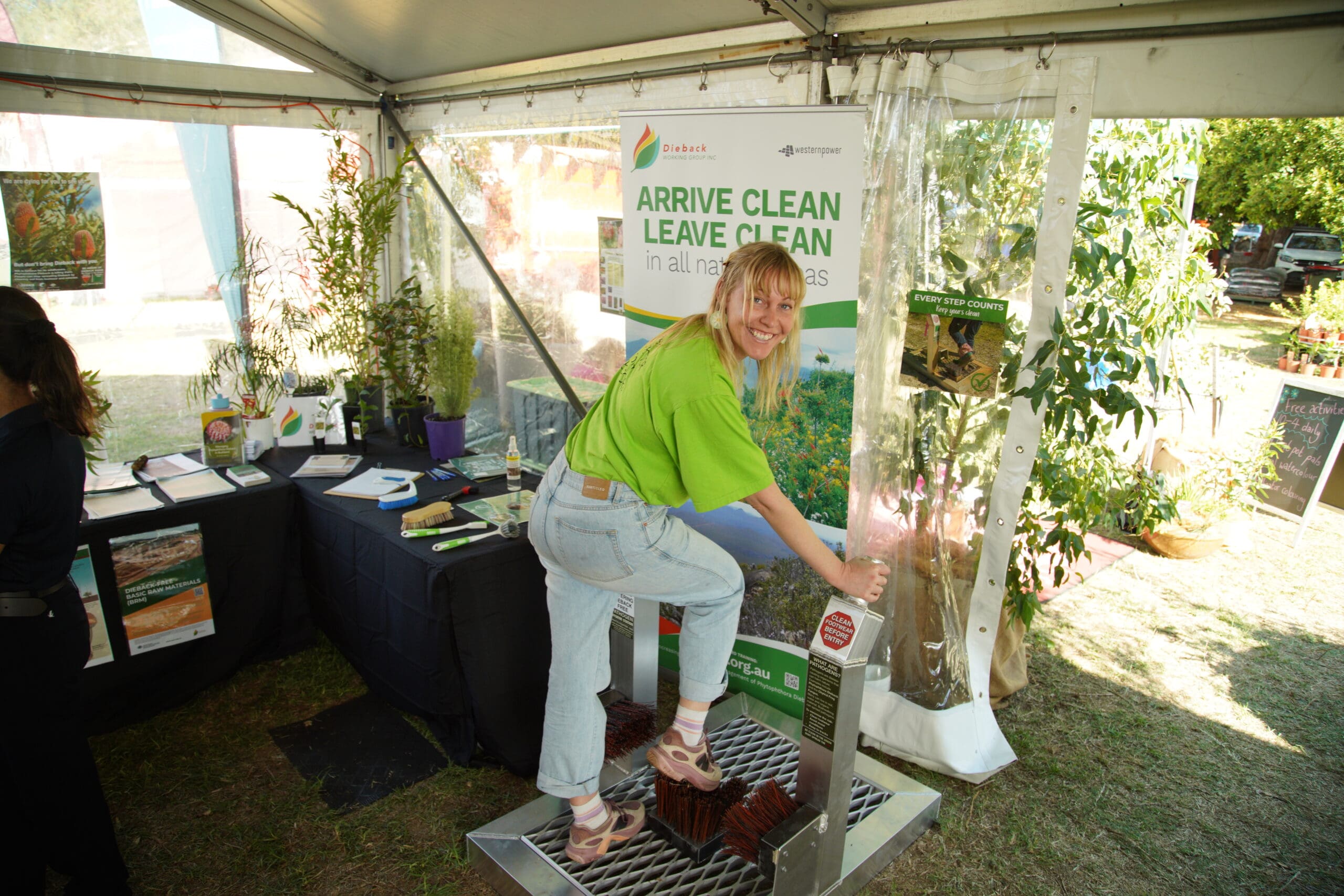
Amy Priemus showing us how to ‘Arrive Clean – Leave Clean” – Alex Haygarth
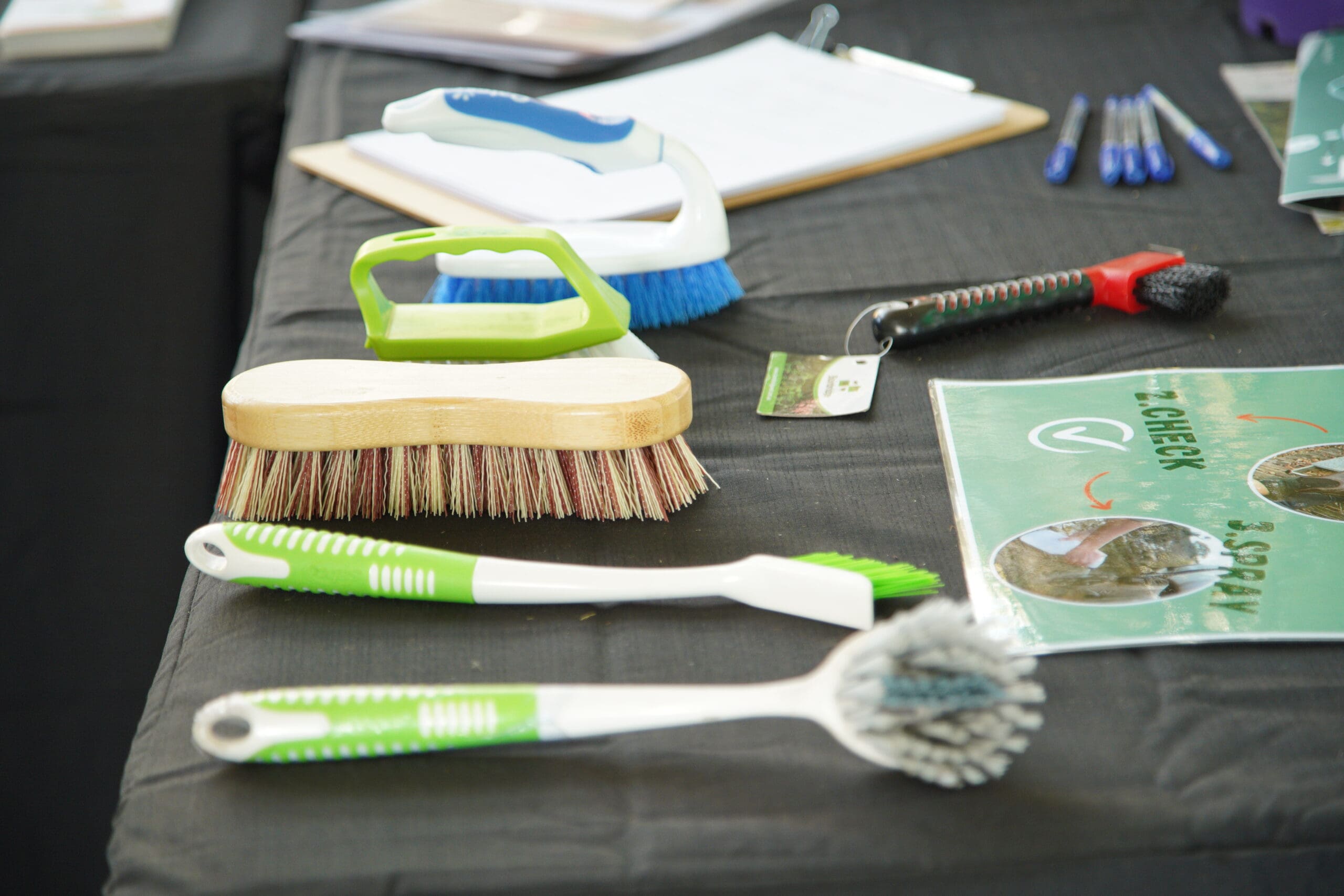
Pop one of these brushes in your car to clean your boots.
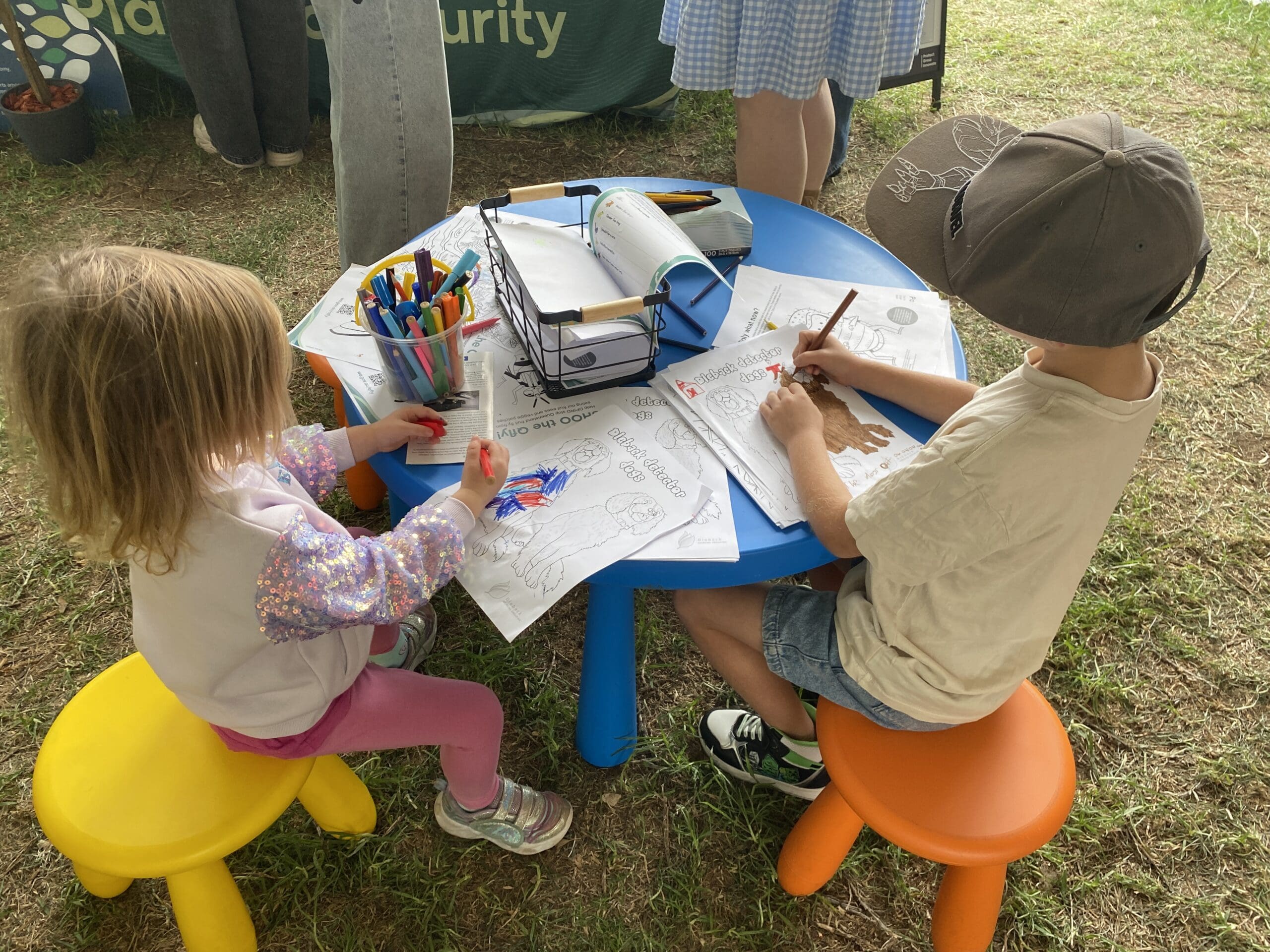
Kids were keen to clean their shoes and colour in detector dogs!
DWG displayed a range of shoe-cleaning options, from simple brushes to the big rig Phytofighter boot-cleaning station. Lots of kids, in particular, were keen to have a go. Our top tip? Always start by removing all soil from your shoes and gear, this is the most important step in stopping the spread of Dieback. Disinfectant spray is a great extra if you’ve got it, but remember: it only works on clean, soil-free footwear!
Our table had a demo showing tree injections with Phosphite, led by Roleybushcare’s own Mady Colquhoun. We displayed a collection of plants that are Dieback Resistant and Dieback Susceptible, along with a questionnaire to support future research in the Phytophthora space. This activity was led by Murdoch University researcher Janene Sproul and Masters student Regan Keens. Plant pathologist and DWG Education Subcommittee Chair Peter Scott also brought his expertise, sharing updates on DWG’s newly revamped Year 6 education package.
We had a wide variety of great conversations with people who visited our stall, from those after basic info on Phytophthora, to folks seeking treatment options, to people with tricky questions about plant deaths on their properties. A lot of visitors were expanding their home gardens or bush blocks, and we made it our mission to keep their gardens disease-free by pointing them to native nurseries with NIASA accreditation, like Zanthorrhea and Australian Native Nursery.
NIASA-accredited nurseries in WA follow strict biosecurity protocols, including using clean water and growing media, keeping high hygiene standards, regularly monitoring plant health, and training staff to prevent the spread of pests and deadly pathogens like Phytophthora. Without these precautions, there is a risk of introducing Dieback and other pests into the garden when you bring home new plants and soil. We also distributed lists of WA native plants that are susceptible and resistant to Dieback to people who suspected or knew that their property may already be infested.
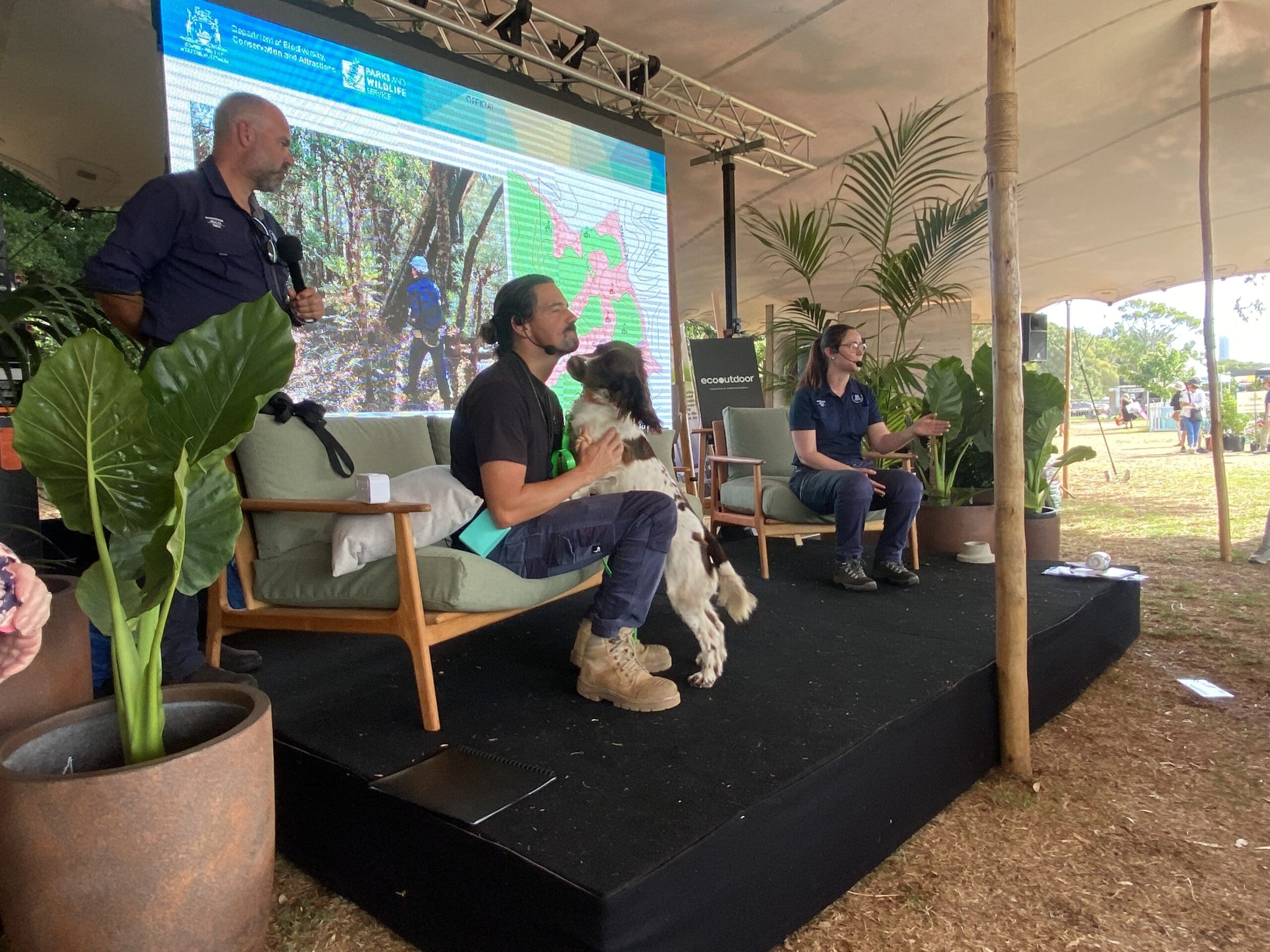
Dieback Detector Dog Milo showed off his skills on stage with his trainer Ryan Tate.
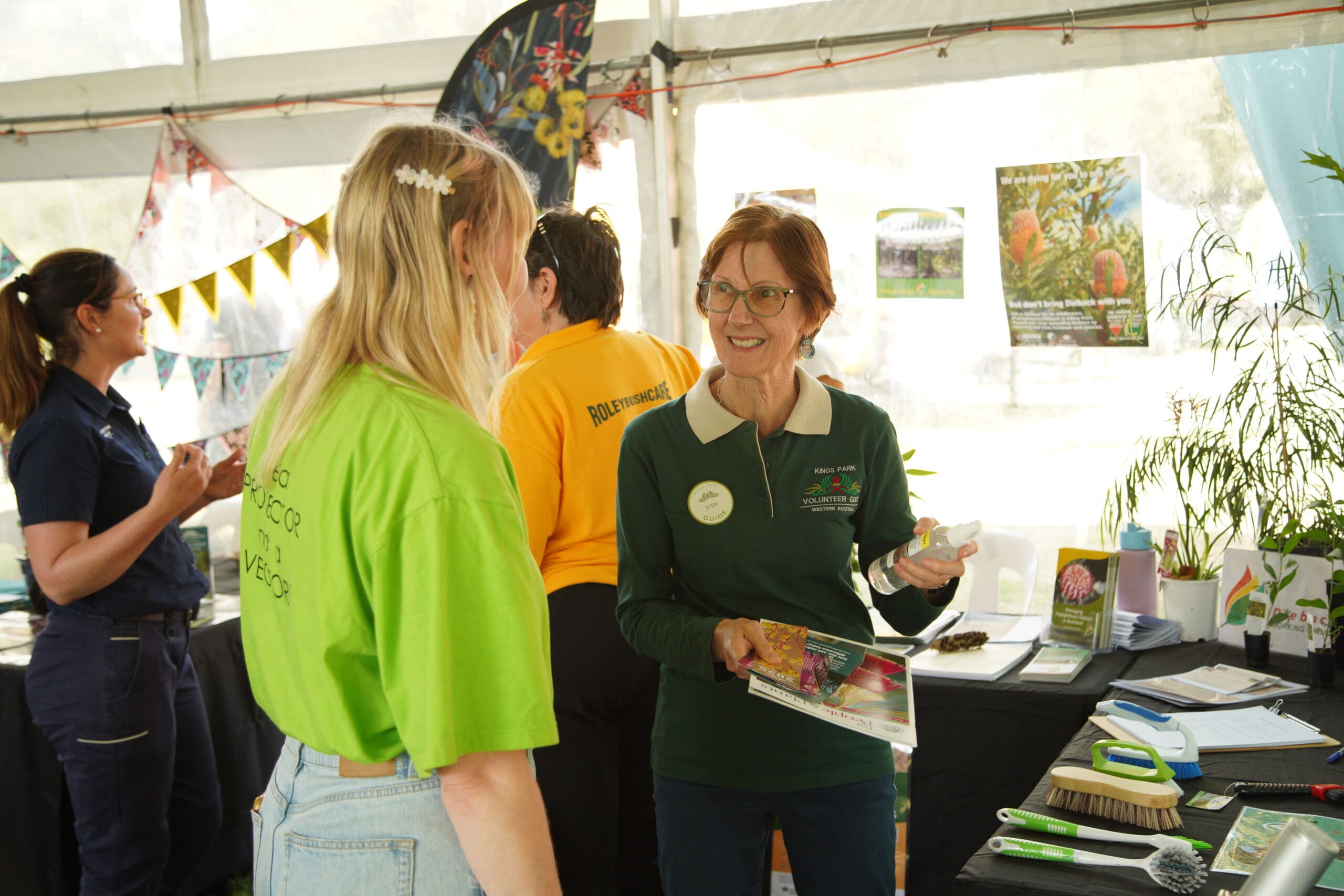
Lots of great conversations from basic info to treatment options – Alex Haygarth
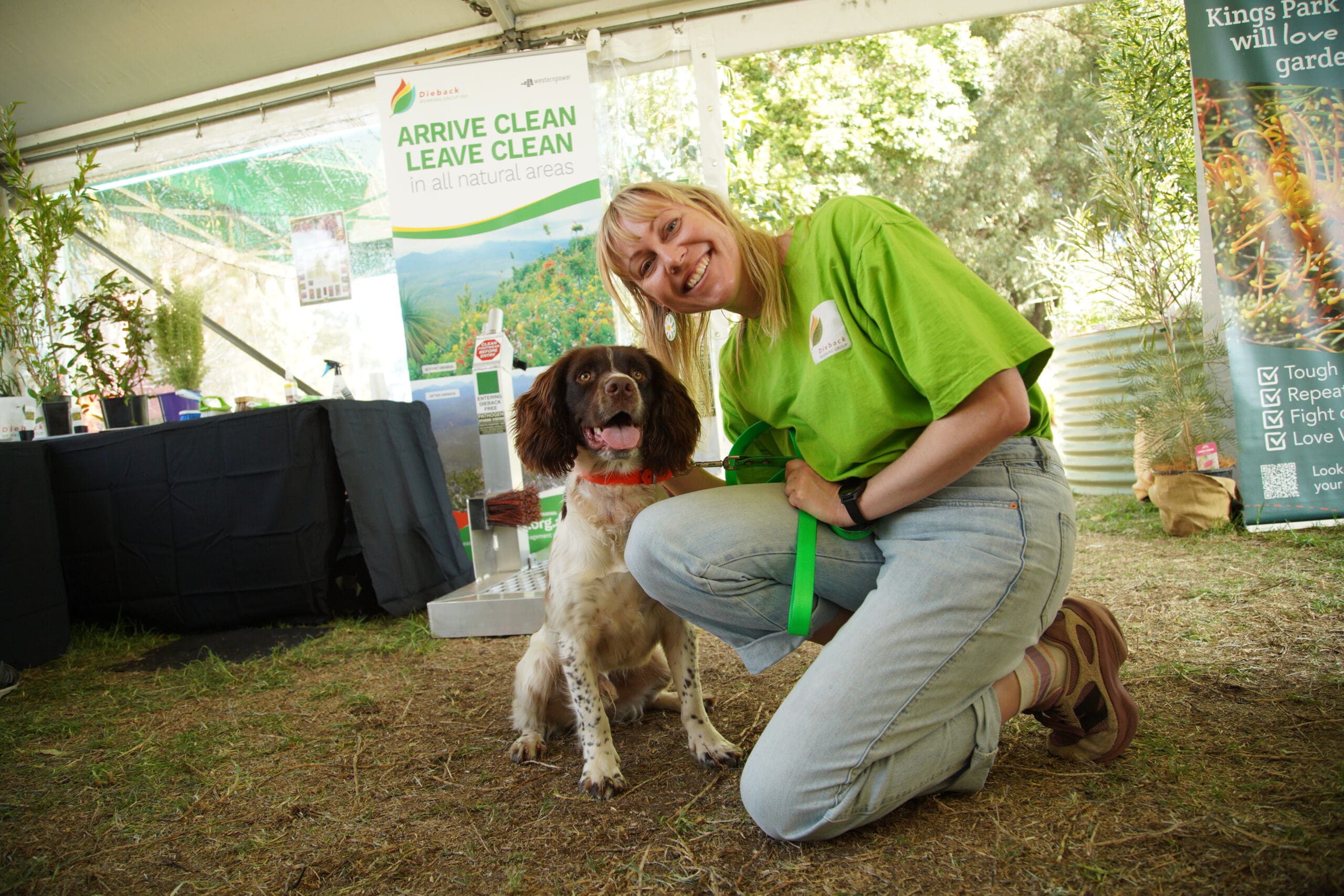
Loved sharing the space with Milo! Milo and Amy – Alex Haygarth
Dieback Detector Dog Milo and his trainer Ryan have recently arrived in WA and joined us at the show on Friday and Saturday with the DBCA team. At just 10 months old, Milo is trained solely to detect Phytophthora cinnamomi and is already proving to be incredibly effective. Dogs like Milo are trained to detect the scent of Phytophthora species by identifying volatile organic compounds (VOCs) released by the pathogen or by infected plant roots and surrounding soil. Milo’s extremely playful nature is what makes him so good at his job. He is rewarded for finding Phytophthora with an “explosion of fun and games”. Milo showed off his skills on stage to a captivated audience, picking up the Phytophthora scent placed nearby. He even managed to find a Phytophthora sample that DWG had under our table, sealed in agar in a petri dish, inside a zip lock bag, inside a sealed plastic container. What a nose!
By Sunday arvo, we felt like we’d just about answered every Dieback question under the sun. We really appreciated how engaged people were with the topic and how much enthusiasm we saw toward planting healthy gardens using local plant species. What a great event – we hope to be back next year!
How to clean your boots – help stop the spread of Phytophthora Dieback. Video by Paolo Sulit.
